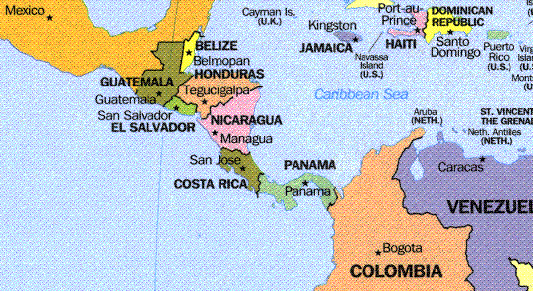URBANIZATION, POVERTY, AND CHILDREN IN LATIN AMERICA

*Total Population: 4,717,132 (July 1999 estimate)
**Urban Population: (1995 estimate) 2,938,887 (67 % of total population)
**Rural Population: 1,447,511 (33 % of total population)
**3 largest cities:
Managua - 1,500,000 (1992 estimate)
León - 150,000 (1995 estimate)
Masaya - 100,000 (1995 estimate)
*Age Structure: (1999 estimate)
0-14 years: 2,056,178 (44% of total population) male 1,037,269; female1,018,909
15-64 years: 2,533,682 (54 % of total population) male 1,236,326; female 1,297,356
65 years and over: 127,272 (2% of total population) male 54,706; female 72,566
*Population below poverty line: 50.3% (1993 estimate)
**Literacy: (1995 estimate)
Definition: age 15 and over can read and write
This graph, as well as future projections of the population of Nicaragua can
be found at http://www.census.gov/ipc/www/idbpyr.html.

GEOGRAPHY
Map of the country from "Destination Nicaragua"

Context of Nicaragua within Central America and the Caribbean

Back to Nicaragua Case Studies